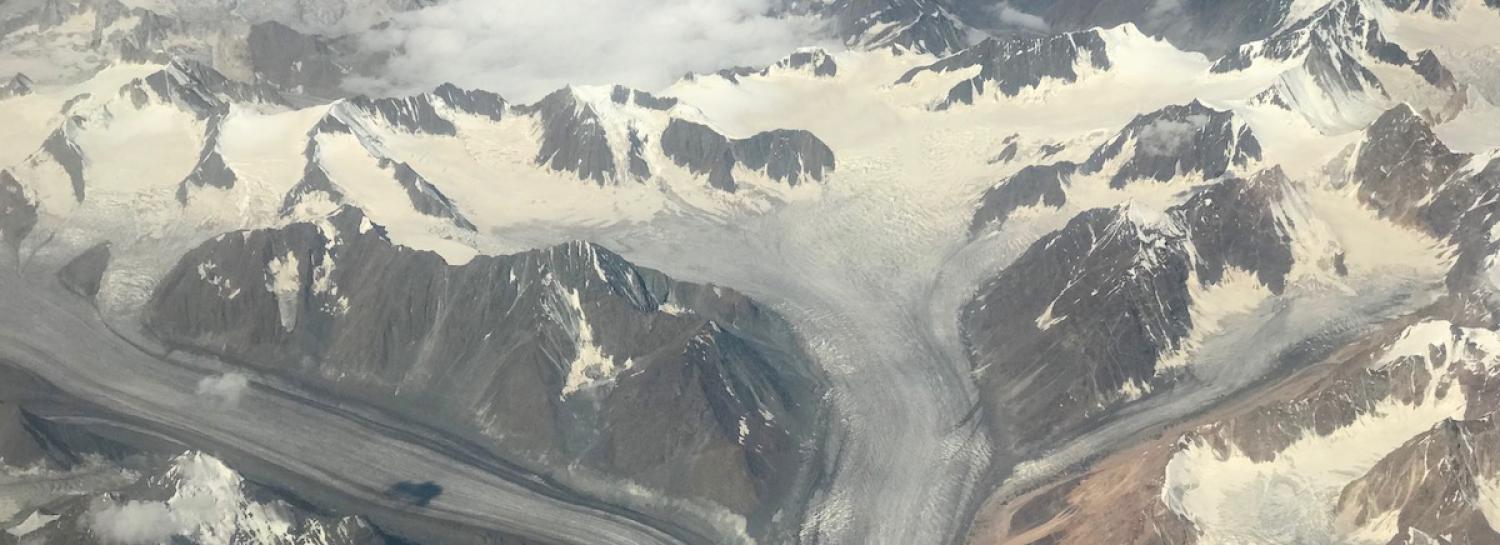In the last few decades, state-making projects have transformed life in the Himalaya. Infrastructure development intended for troop deployment along disputed borders has, more recently, enabled large-scale transport and extraction projects and a tourist rush in this globally influential region.
Geopolitical analyses of China-India-Pakistan tensions have focused on the likelihood of violent conflict. Yet this is only one of the region’s many problems. It is home to a mosaic of ethnic groups. Its ice-deposits (the world’s third largest) feed most of Asia’s large rivers. Militarisation and unchecked development threaten these vulnerable communities and fragile ecologies. To make matters worse, the Himalaya is experiencing climate change at twice the global average.
The Himalaya’s precarious geopolitics are transforming the region politically, culturally, linguistically, and environmentally.

The 2,400 kilometres of the Himalaya range marks several state borders. It begins on the disputed Pakistan-India border in Kashmir, curls southeast through the disputed China-India border, the undisputed China-Nepal border, the disputed China-Bhutan border, and finally the Eastern section of the China-India border dispute.
Violent conflict is only one of the region’s problems. It is facing rapid climate change and vulnerable local communities are threatened.
India and Pakistan have fought three wars over Kashmir. The region remains restive. Aksai Chin, a large high-altitude desert between Ladakh (India), the Tibetan Autonomous Region (China), and Xinjiang (China), is administered by China, and claimed by India. In the East, Arunachal Pradesh is administered by India and claimed by China, appearing on Chinese maps as Nan Tsang (Southern Tibet).
Since the contemporary Indian and Chinese states emerged in the 1940s, they have struggled to solidify control over the Himalaya. China-India cooperation was shattered by a 1962 border war. Although the war was short, tensions have remained. China (1964), India (1998), and Pakistan (1998) have all become nuclear-armed states. This has enabled a seemingly permanent state of low-level but persistent tension.
This normalised state of border scuffles escalated last year in the Doklam standoff when China tried to wrest a piece of high-ground on the China-Bhutan border from Indian troops. Both Bhutan and Nepal have been placed in difficult positions by India-China tensions. India incorporated a third small Himalayan kingdom, Sikkim, into its territory in 1975, which China only recognised in 2003. There are still skirmishes along the nominally resolved China-Sikkim border. China’s Belt and Road development plans in Nepal and Pakistan have exacerbated regional tensions.
This friction has led to both the militarisation and competitive development of the region. Hundreds of thousands of troops are stationed across the mountains and all Himalayan states are engaged in competitive, un-checked development projects aimed at least in part at solidifying territorial control.
This situation is not socially, culturally, or environmentally sustainable.
The Himalaya’s difficult terrain has helped to maintain a rich diversity of languages and cultures. However, the borders’ militarisation and competitive developments are threatening local cultures and exacerbating tensions among the region’s ethnic groups.
The minority languages of the Himalaya are threatened. Unless carefully managed, state-sponsored militarisation, nationalisation, urbanisation, and development projects will jeopardise their existence. Loss of linguistic diversity disrupts cultural transmission, erases traditional ecological knowledge, and often leads to minority disenfranchisement. All of which spells more potential strife.
The region’s religious and cultural balance is also under threat. Hinduism, Buddhism, Islam, and local traditions are all practised in the Himalaya, and many people combine traditions and beliefs from various religions. Religious groups often have uneasy relationships with each other and nation-states. There are, furthermore, complex relationships between languages and religions in the region that defy easy governmental categories.
In northern Pakistan, Kashmir, and the Tibetan Autonomous Region there are many Muslims who speak Tibetan languages, usually associated with Buddhism. Darjeeling is home to a large community of Hindi-speaking Buddhists. In cosmopolitan cities like Kathmandu, Lhasa, and Srinagar many people combine languages and religious practices in their daily routines.
Environmental degradation poses an even greater threat to the region’s geopolitical status-quo. The whole region is considered to be a biodiversity hotspot. It constitutes the headwaters of most of Asia’s major rivers, including the Indus, Ganges, Brahmaputra, Salween, Mekong, and Yangtze. The ice-pack that clings to this “third pole” not only feeds these and other rivers but also moderates the monsoon rains that provide the other primary source of freshwater for drinking, agriculture, and manufacturing to South, East, and Southeast Asia. The mountains, rivers, and the rains work together to deposit silt and moisture on the fertile river plains of lowland Asia, which are home to approximately 40% of the global population.
Even slight changes in water flow will have dramatic impacts on regional (and global) economy and security. The presence of armies, tourists, and accelerated and unsustainable development are effecting this change, and contributing to the region’s higher than average rates of global warming. Glaciers are melting and rain patterns are shifting, increasing the likelihood of flash floods and landslides that are killing soldiers as well as civilians.
International cooperation is needed to mitigate the effects of climate-change on both local environments and the greater Himalayan watershed. Instead, geopolitical tensions have fed into, and been exaggerated by, water crises in Pakistan, India, and China. Rather than co-operating to ensure river flow is stabilised, Himalayan states are involved in competitive and controversial, large-scale hydro-power schemes and water-transfer projects. After Doklam, China even refused to grant India the water flow data it needed to prepare for monsoon floods.
Regardless of the likelihood for conflict, the militarisation of the Himalaya is already creating disastrous results. Any analysis of India-China-Pakistan tensions that does not take these circumstances into account distorts its realities.


